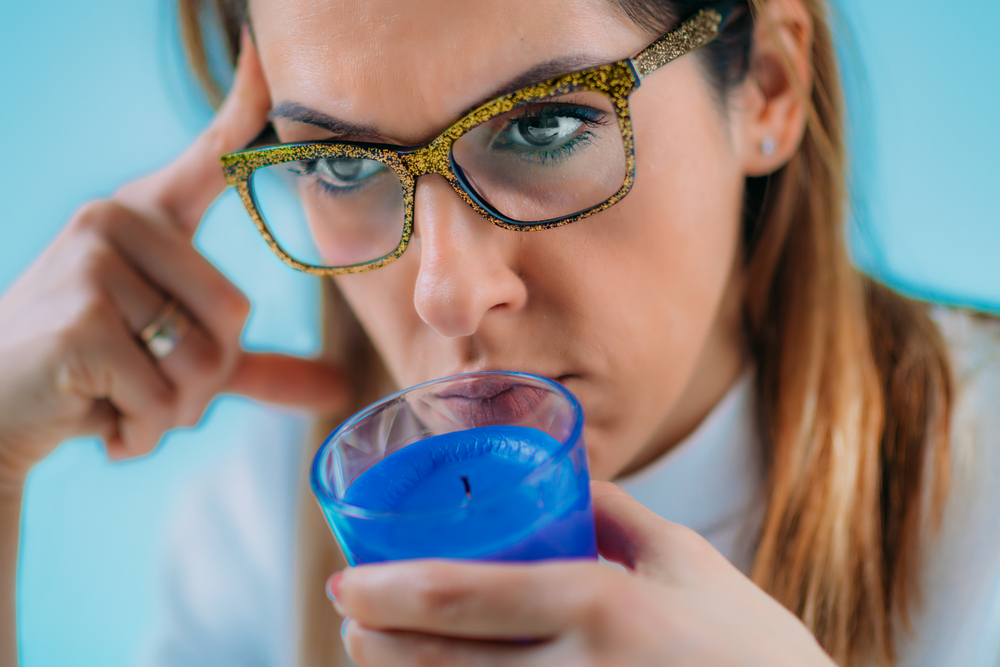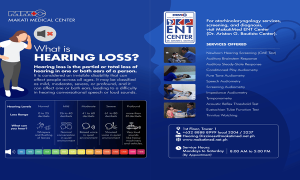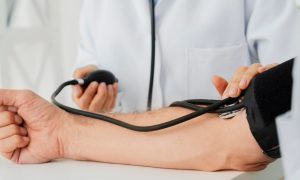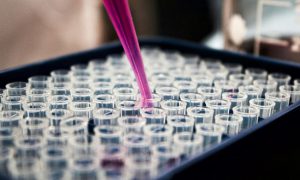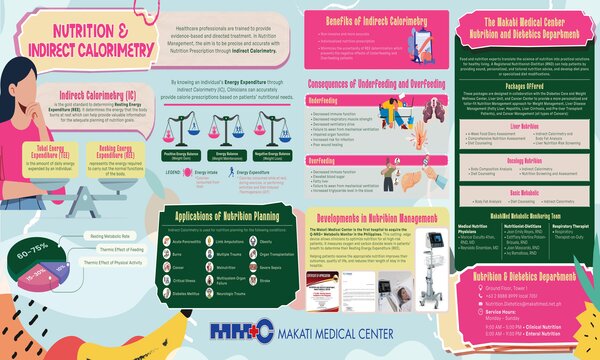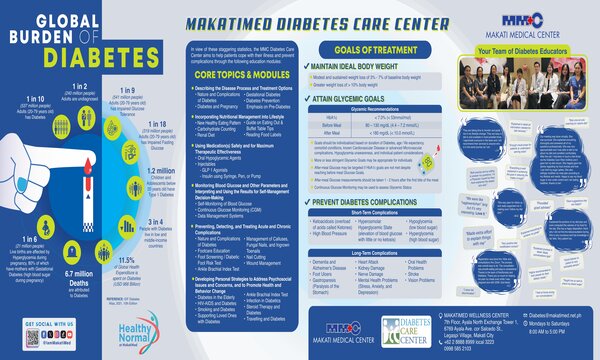As the country adjusts to the new normal, the government continues to enforce quarantine regulations, including reduced operating hours for commercial establishments and limited transportation, to keep the public safe from the dangers of COVID-19. While these measures have compelled people to stay at home, these alone haven’t given them the peace of mind they seek.
With a vaccine still under development and no specific medicine to cure the disease, wearing a mask, social distancing, and practicing good hand and personal hygiene are still everyone’s primary means of defense.
Though leaving the house cannot be helped at times, wearing personal protective equipment (PPE) and being aware of how COVID-19 can be transmitted along with its known signs are vital to the general public’s safety. Apart from flu-like symptoms, other indications are the sudden loss of taste and smell.
With a vaccine still under development and no specific medicine to cure the disease, wearing a mask, social distancing, and practicing good hand and personal hygiene are still everyone’s primary means of defense.
Though leaving the house cannot be helped at times, wearing personal protective equipment (PPE) and being aware of how COVID-19 can be transmitted along with its known signs are vital to the general public’s safety. Apart from flu-like symptoms, other indications are the sudden loss of taste and smell.
How COVID-19 Causes Loss of Smell and Taste
The impairment of these two senses has been anecdotally linked to COVID-19 infections. Medical studies show that up to 80% of coronavirus patients experience anosmia (smell blindness) and have a compromised sense of taste. This begs the question: how does the disease disable the two senses?
The best way to explain this phenomenon would be to understand the role of the ACE2 receptor. The angiotensin-converting enzyme 2 (ACE2) is a receptor protein that helps control blood pressure, manage inflammation, and even aids in wound healing.
Using the spike-shaped protein on its surface, the SARS-CoV-2 virus binds itself to the enzyme found in the epithelial cells or the cells that are found on the surface of the nose, mouth, and lungs, making them the main pathways of infection. While COVID-19 does not directly affect the central nervous system’s neural circuits, it attacks the other cells which support the two senses that are affected.
At the same time, respiratory infections, inflammation, and other underlying health conditions may also be magnified by the virus. This creates all sorts of complications that lead to severe symptoms, making matters worse for the infected.
While one’s condition could vary, the virus’s impact on ACE2 has given health professionals insights on how COVID-19 patients should be treated. Since the loss of smell and taste can also be caused by other illnesses, it is best to reach out to a doctor of infectious diseases for proper diagnosis.
The best way to explain this phenomenon would be to understand the role of the ACE2 receptor. The angiotensin-converting enzyme 2 (ACE2) is a receptor protein that helps control blood pressure, manage inflammation, and even aids in wound healing.
Using the spike-shaped protein on its surface, the SARS-CoV-2 virus binds itself to the enzyme found in the epithelial cells or the cells that are found on the surface of the nose, mouth, and lungs, making them the main pathways of infection. While COVID-19 does not directly affect the central nervous system’s neural circuits, it attacks the other cells which support the two senses that are affected.
At the same time, respiratory infections, inflammation, and other underlying health conditions may also be magnified by the virus. This creates all sorts of complications that lead to severe symptoms, making matters worse for the infected.
While one’s condition could vary, the virus’s impact on ACE2 has given health professionals insights on how COVID-19 patients should be treated. Since the loss of smell and taste can also be caused by other illnesses, it is best to reach out to a doctor of infectious diseases for proper diagnosis.
Normal Cold or Flu Symptoms vs. COVID-19
COVID-19 is frequently mistaken for influenza. Both diseases share symptoms, such as headache, fever, and body aches, that should not be taken lightly. However, the loss of smell and taste from COVID is a lot different than that of the flu.
Unlike the cold that compromises the nasal cavity and airways, COVID-19 also affects the nervous system. Because of this, even without a runny or stuffed nose, the virus can hinder the transfer of sensory information and lead to the sudden and complete loss of taste and smell. In severe instances, some patients can no longer tell the difference between bitter and sweet.
While individuals with mild cases have a high recovery rate, those who are most vulnerable are at a higher risk of long-term damage and even death.
Unlike the cold that compromises the nasal cavity and airways, COVID-19 also affects the nervous system. Because of this, even without a runny or stuffed nose, the virus can hinder the transfer of sensory information and lead to the sudden and complete loss of taste and smell. In severe instances, some patients can no longer tell the difference between bitter and sweet.
While individuals with mild cases have a high recovery rate, those who are most vulnerable are at a higher risk of long-term damage and even death.
How Long are These Senses Affected by COVID-19?
In an interview with CNN, COVID-19 patients shared that they could not smell for two (2) to three (3) weeks. One person reported that they smelled burnt plastic, while another has claimed that smelling chicken felt nauseating. They state that this experience has been inconvenient in many ways and caused a great deal of stress.
People who have contracted the virus gradually recover within a month, but some individuals can be affected for longer periods. A Journal of American Medical Association (JAMA) network study stated that 90% of patients who lost their sense of smell or taste claim that their senses improved within four weeks, while 11% said their condition did not change and even got worse.
While the effect of COVID-19 on these two senses is evident, more research is needed to determine how exactly the virus alters smell and taste. Fortunately, COVID-19 patients can be subjected to olfactory training as a low-cost form of therapy to bring back their damaged senses.
People who have contracted the virus gradually recover within a month, but some individuals can be affected for longer periods. A Journal of American Medical Association (JAMA) network study stated that 90% of patients who lost their sense of smell or taste claim that their senses improved within four weeks, while 11% said their condition did not change and even got worse.
While the effect of COVID-19 on these two senses is evident, more research is needed to determine how exactly the virus alters smell and taste. Fortunately, COVID-19 patients can be subjected to olfactory training as a low-cost form of therapy to bring back their damaged senses.
Always Be Responsible for Your Health and Safety
Despite all the available information, many out there still do not understand the severity of COVID-19. The loss of taste and smell may not seem life-threatening, but the damage to these two senses can greatly affect one’s quality of life. Without a cure or a vaccine at hand, everyone must take preventive measures and be responsible for their own safety.
Staying home, eating nutritious food, and adhering to strict health guidelines are some of the things people can do to keep the virus from spreading. If you are experiencing symptoms or a loved one has been exposed to a COVID-19-positive individual, please do not hesitate to reach out to Makati Medical Center for proper testing and diagnosis.
Staying home, eating nutritious food, and adhering to strict health guidelines are some of the things people can do to keep the virus from spreading. If you are experiencing symptoms or a loved one has been exposed to a COVID-19-positive individual, please do not hesitate to reach out to Makati Medical Center for proper testing and diagnosis.

